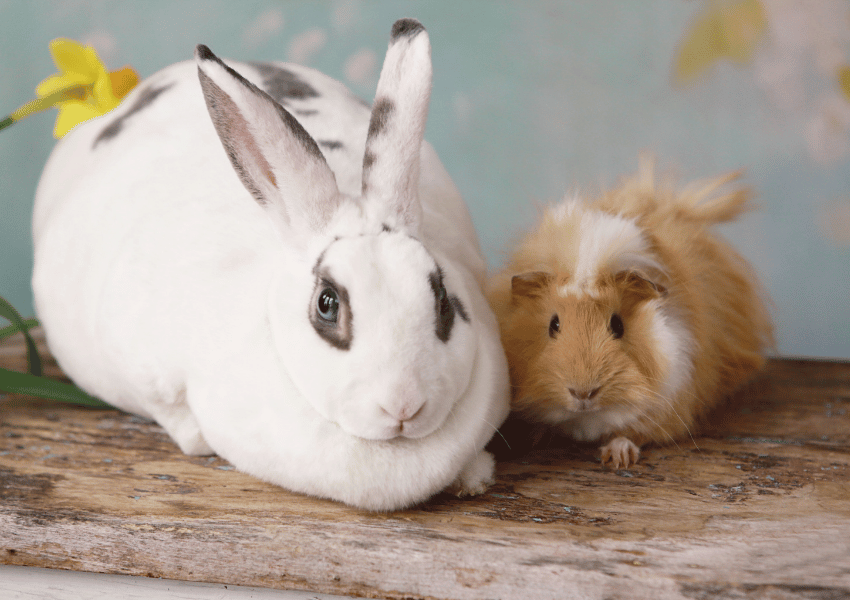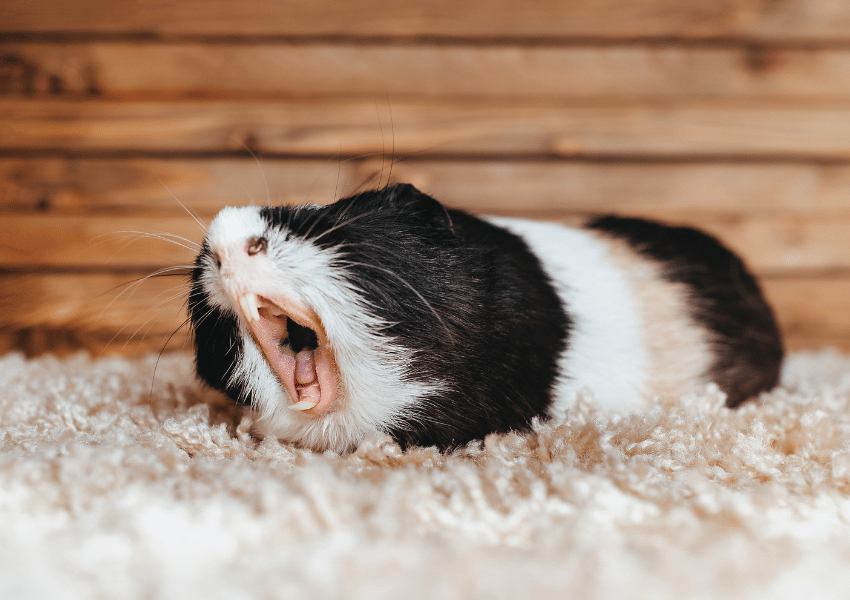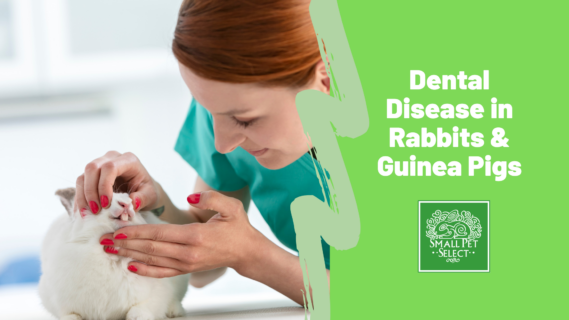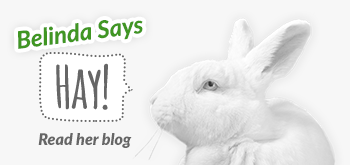Issues with teeth are some of the most common health issues rabbits and Guinea pigs have. These issues are related to the fact that their teeth continuously grow throughout their lifetime, around 3-4 inches per year! If our pets’ teeth are not consistently worn down at the same rate they grow, they can experience weight loss; eye, ear, and sinus infections, and the inability to groom properly.
Understanding dental disease in small pets
Since rabbit and Guinea pig teeth continuously grow, they must also continuously be worn down. This prevents overgrown teeth. When the front teeth (incisors) overgrow, they can stick out of the mouth, curl into the mouth or cheeks, and cause rabbits to not be able to close their mouths, bring food into their mouths, and groom effectively. When back teeth (molars or cheek teeth) overgrow, sharp points on the edges can cut and damage the tongue and cheek, causing pain and inappetence. Sometimes overgrown back teeth can even trap the tongue. Back teeth can also grow “inward” into the sinuses, causing abscesses and infection.
There are several causes of tooth overgrowth. First is an improper diet. Rabbits and Guinea pigs need hay (in the form of strands, not pellets), because the process of chewing a lot on fibrous strands of hay naturally wears down the teeth. High-quality pellets are also important, as a small amount of them each day contains the minerals pets need for teeth health.
Genetics can be another cause. For example, dwarf and lop-eared rabbits (rabbits who tend to have “flat” faces and therefore shorter jaws and crowded teeth) often have a tooth condition called “malocclusion.” This is when the upper teeth and bottom teeth don’t match up. When they don’t match up, overgrowth of the parts that don’t match up can occur.
In addition, as rabbits get older their risk of dental disease increases.

Signs of dental disease
There are a number of various signs of dental disease in rabbits and Guinea pigs. The prevalence of teeth issues is so great, in fact, that no matter what health issue your pet is having, it’s a good idea to have its teeth checked as well. Signs include the following:
Inappetence (either eating less or not wanting to eat at all) and/or weight loss – from discomfort or inability to eat due to overgrown teeth
Passing smaller-sized or less fecal pellets – due to eating less
Drooling (obvious drool or having a wet chin) – from overgrown teeth or pain
Runny or gooey eyes – from affected tooth roots and abscesses impinging upon the tear ducts
Sneezing and/or discharge from the nose – due to overgrown tooth roots affecting the sinuses
Dirty bottoms – because grooming is difficult and painful
Lumps on the cheeks, around the eyes, or on the jaw – indicating abscesses
Teeth grinding – due to pain
Blood around the mouth – from sharp points on teeth rubbing against the cheeks or gums.
Treatment
If your rabbit or Guinea pig has dental disease, it needs to be treated. If not, the pain will get worse and your pet will not eat properly, leading to gut issues that can cause death.
At your veterinarian, your pet will be anesthetized and will have its teeth filed down, cut (in the case of very long incisors), and possibly extracted. If your pet has a dental abscess, the tooth will either be extracted and the abscess cleaned out or the abscess drained through the gums and your pet put on antibiotics.
If your pet has been diagnosed with a dental issue, it will need to be checked out about every other month – or sooner if you notice any signs – and may need treatment again, almost always if it has had to have its teeth filed down. Occasionally your veterinarian may recommend having fast-growing incisors extracted. (Note that rabbits also have “peg teeth,” an “extra” set of incisors behind the first one that continue to grow as well if the vet doesn’t stop those from growing.)
Make sure that the veterinarian you go to has both experience with and the necessary tools to work with rabbit and Guinea pig teeth. I have worked in places that do not have the correct equipment and have had to refer to other places that do. Also, ask how your vet trims incisors; a rotary drill type tool meant for teeth should be used, never clippers.
After treatment, make sure to get your pet eating as quickly afterward as possible so that gut issues don’t occur.

Prevention
Annual, if not every-six-month, veterinary checkups are important for any pet in order to identify possible dental problems and prevent them from getting worse. During a dental exam, your vet will ask a number of questions about how your pet is doing and use an otoscope (used for ear exams) or a similar tool to look inside your pet’s mouth. Skull x-rays might be recommended, too, to check the roots of the teeth.
And of course, be sure to always have high-fiber, high-quality Timothy hay, orchard grass, or other grass hay available for your rabbit or Guinea pig in addition to a small amount of high-quality Timothy hay-based pellets and greens.
Copyright 2025 Amy “Brem” Bremers, DVM





